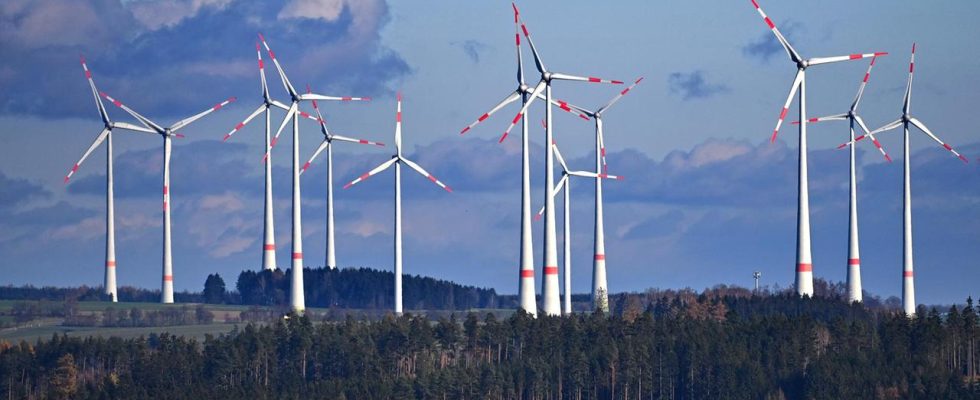Over half of the electricity generated in Germany in 2023 came from renewable energy sources. Wind power replaced coal as the most important source and reached a peak in feed-in.
Wind power has replaced coal as the most important energy source for electricity generation in Germany. Almost a third (31 percent) of the electricity generated last year came from wind power, as the Federal Statistical Office (Destatis) announced today. Feed-in from wind power reached a new high of 139.3 billion kilowatt hours in 2023.
Share of renewable energies at 56 percent
In addition, according to the Wiesbaden statisticians, 2023 was the first year in which more electricity was fed in from renewable energies such as wind, water and sun than from conventional energy sources such as coal, natural gas and nuclear power in almost all months. A total of 449.8 billion kilowatt hours of electricity were generated in this country.
The share of renewable energies reached a total of 251.8 billion kilowatt hours and a share of 56 percent of the total. In 2022, the share of renewable energies was 46.3 percent.
The Destatis figures also correspond to those of the Federal Network Agency for last year. According to this, the gross installed capacity of solar energy, wind energy on land and at sea as well as biomass was 160,339 megawatts (around 160 gigawatts). This means they cover the equivalent of 56 percent of total electricity generation. For comparison: in 2022 there were almost 20 gigawatts less and ten years ago it was only around half.
Nevertheless, there is still “a lot ahead of us” when it comes to wind power.
The statisticians explained the fact that wind energy in particular increased so significantly by saying that there was a lot of wind and capacities were expanded. According to the federal government’s plans, the output of wind turbines is expected to more than double to 145 gigawatts by 2030 – 115 gigawatts of which will be on land. After all: According to the Federal Network Agency, a total of 1,464 new wind turbines were approved last year – so many approvals have not been granted since 2016.
According to experts, the pace of expansion of wind power is far from sufficient – despite mandatory expansion targets for the federal states and faster approval procedures. One reason is local resistance, for example in Bavaria, Volker Quaschning, professor of renewable energy systems at the University of Technology and Economics in Berlin, recently told us tagesschau.de. “If we continue to leave out a fifth of the federal territory as much as possible, we will not achieve our goals.”
In all federal states combined, just 81 new onshore wind turbines were put into operation in 2023. “There is still a lot ahead of us and we are currently not achieving our expansion goals,” emphasized Andreas Löschel, Professor of Environmental and Resource Economics and Sustainability at the Ruhr University Bochum, in an interview with tagesschau.de. The economic conditions also played a role. “In particular, the spatial incentives for expansion, for example in the south of Germany with less wind, are not yet suitable at the moment.”
Shares of photovoltaics and natural gas are increasing
According to Destatis information, in 2022 coal was still the most important energy source, accounting for 33.2 percent of the amount of electricity fed in. The share of wind power in electricity generation was significantly lower at 24 percent. Despite the share falling to 26.1 percent, coal remained the second most important energy source for electricity generation in Germany last year.
The quotas were also affected by the fact that the total amount of electricity generated fell – by 11.8 percent compared to the previous year. The reasons for this: Demand in energy-intensive industries was lower in 2023 due to the weak economy, and the amount of electricity imported from abroad rose significantly by 40.6 percent to 69.3 billion kilowatt hours.
The share of electricity fed in from photovoltaics rose slightly last year to 11.9 percent. Natural gas feed-in increased by 3.9 percent to 13.6 percent, after falling to a multi-year low of 11.5 percent in 2022 as a result of the tense situation on the gas market. Due to the shutdown of the last nuclear power plants in April 2023, electricity feed-in from nuclear energy has also fallen significantly and only accounts for 1.5 percent, it said.
With information from Till Bücker, ARD financial editorial team.

